
Intentional replantation in distal root defect made by wisdom tooth.
12/02/2024
Dennis Quintero Santos
Warning: Undefined variable $post in /var/www/vhosts/styleitaliano-endodontics.org/endodontics.styleitaliano.org/wp-content/plugins/oxygen/component-framework/components/classes/code-block.class.php(133) : eval()'d code on line 2
Warning: Attempt to read property "ID" on null in /var/www/vhosts/styleitaliano-endodontics.org/endodontics.styleitaliano.org/wp-content/plugins/oxygen/component-framework/components/classes/code-block.class.php(133) : eval()'d code on line 2
Intentional replantation is a surgical procedure that has often been regarded as the last resort when nonsurgical or surgical endodontics is contraindicated. In this treatment, the tooth is atraumatically extracted in one piece and treated outside the oral cavity and then reinserted into its original socket.
Clinical indications for intentional replantation include: retreatment and apical microsurgery have failed or are impossible to perform, root canal obstructions, anatomical limitations, cervical root resorptions, restorative or perforation roots defects that exist in areas that are not accessible to treat with traditional methods.
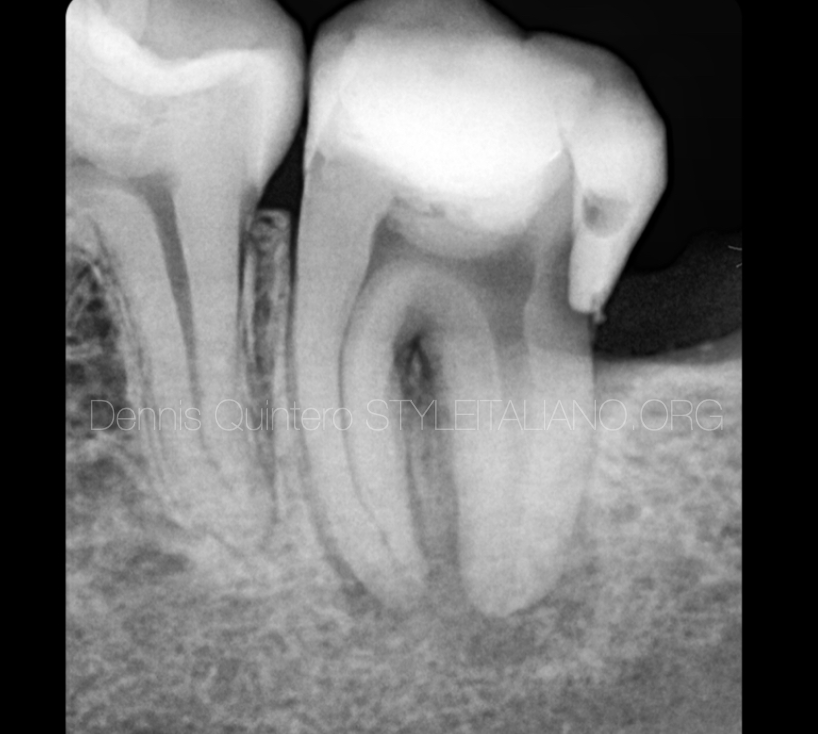
Fig. 1
Initial situation
. Tooth 4.7
Patient came with a necrotic pulp and deep defect on the distal root made by a surgery of wisdom tooth.
Also has a rarefaction on mesial and distal root.
A failed composite restoration on distal defect.
Cervical fistula.
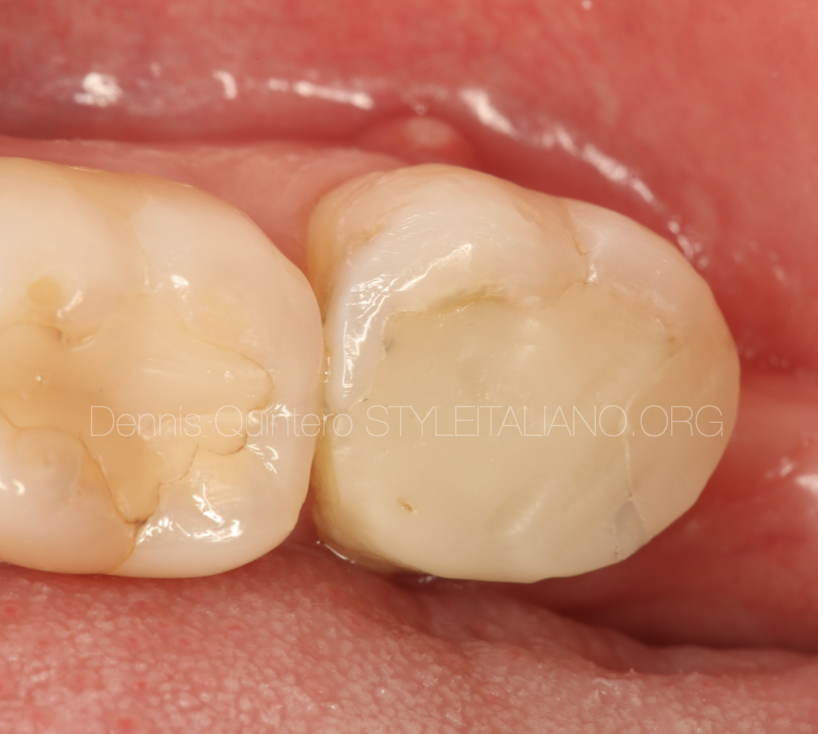
Fig. 2
Intraoral picture where you can see the dimension of composite.
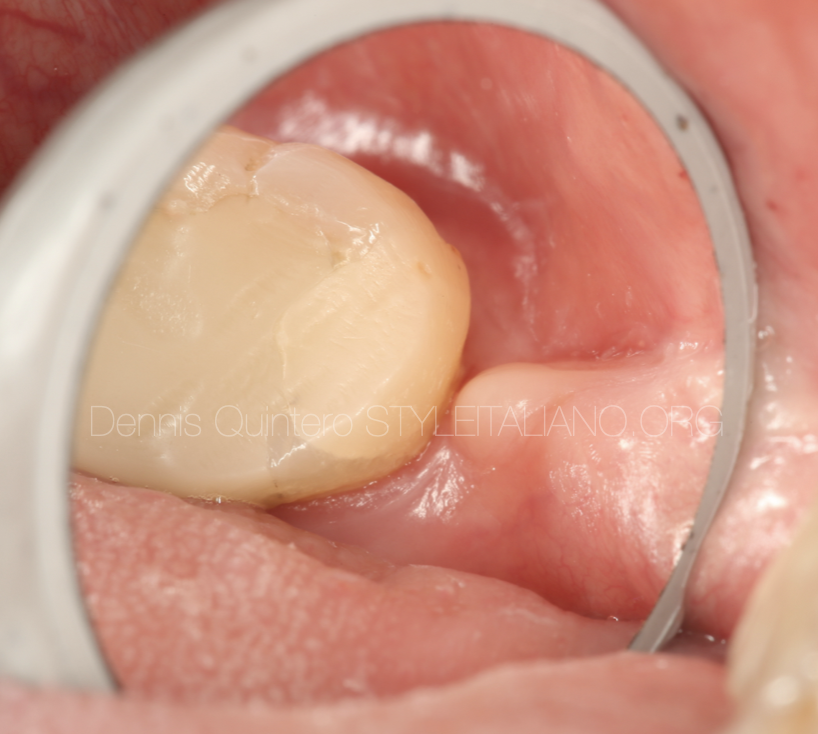
Fig. 3
As you can see in the picture the defect is deep under the gum
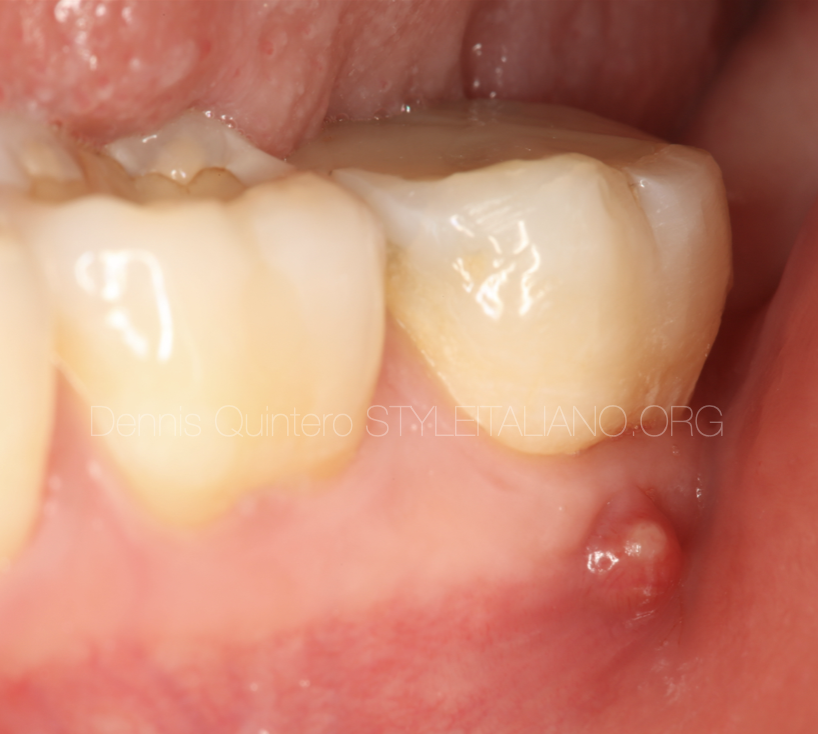
Fig. 4
As you can see we have a fistula, but still have a good remaining of sound structure of the tooth.

Fig. 5
The tooth is in occlusion, so it is very important to save the tooth.
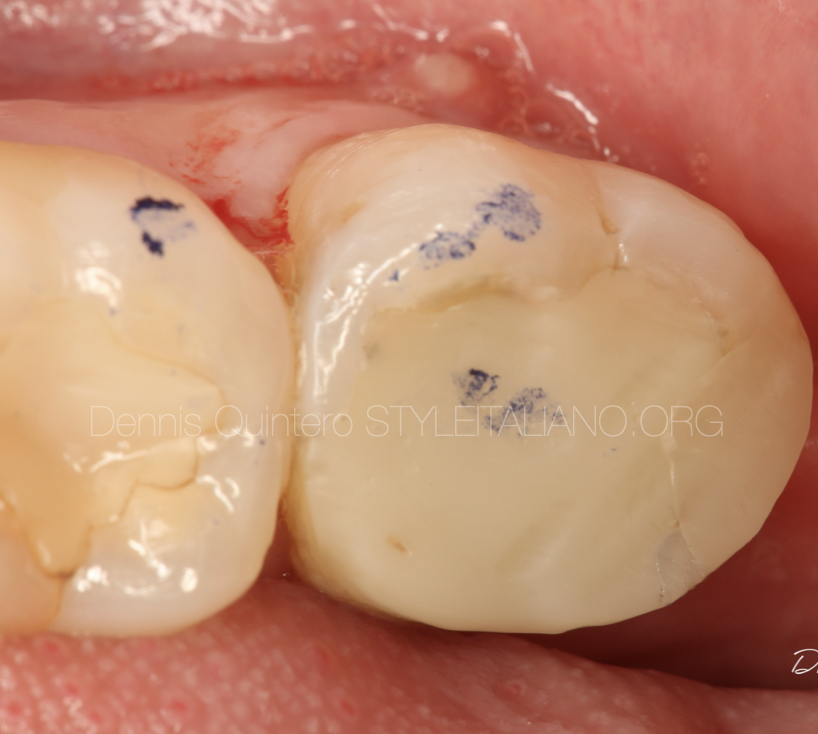
Fig. 6
In this case we need to do several treatments: one is to find a way to try to restore the deep defect on the distal root, but as you know make isolation is impossible, because the defect is so deep that no rubber dam, clamp and matrix will fit all at the same time. Even if you try a crown lengthening, isolation for a good adhesive protocol is mandatory.
So we decide to make a intentional replantation to save the tooth.
First we make an adjustment of the occlusion by using the paper and reduction to avoid any trauma after the replantation of the tooth.

Fig. 7
Second we do the extraction of the tooth in a very delicate way to avoid any root fracture. Very important to not touch or remove the ligament around the root. Remember article say you have less then 15 minutes to work outside the mouth to avoid any possible resorption. So after the extraction I remove the composite and restore correctly the defect, then place the tooth back to the socket
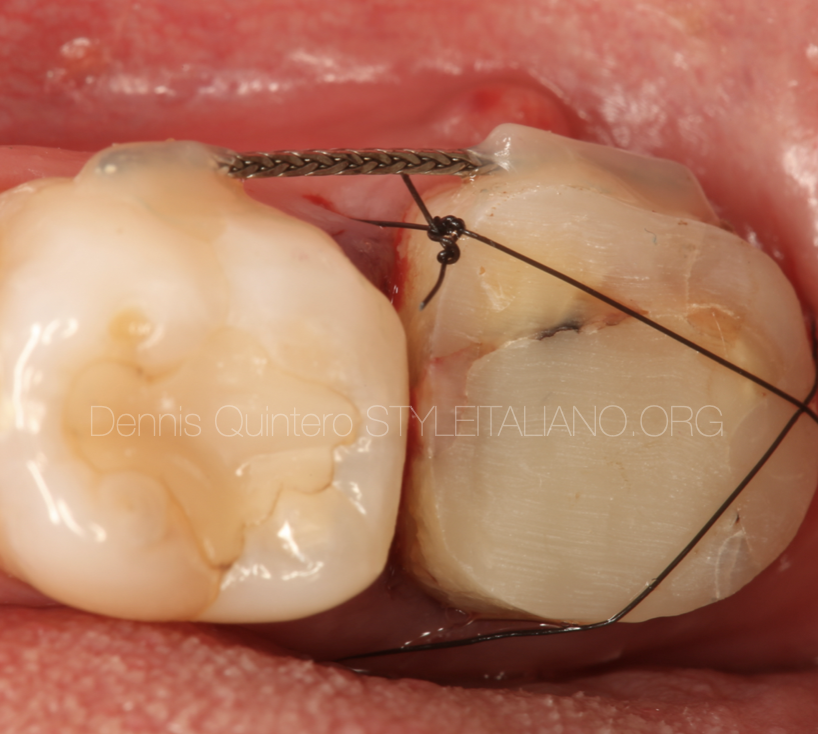
Fig. 8
After placing the tooth into the socket in less than 15 minutes, I made a cross suture and also semi-rigid splinting for 15 days.
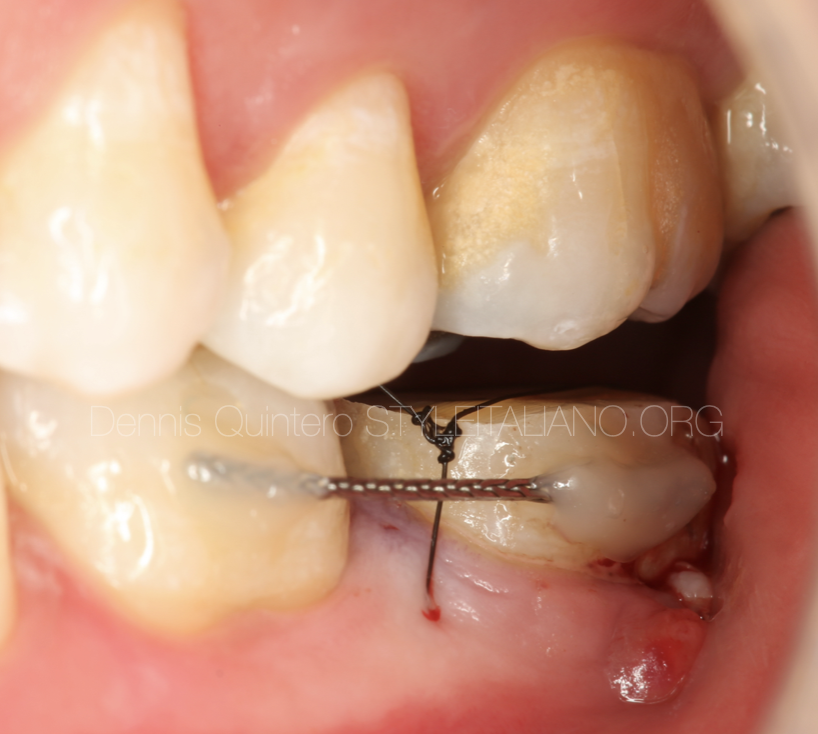
Fig. 9
Tooth out of occlusion to avoid trauma and wait for the healing.
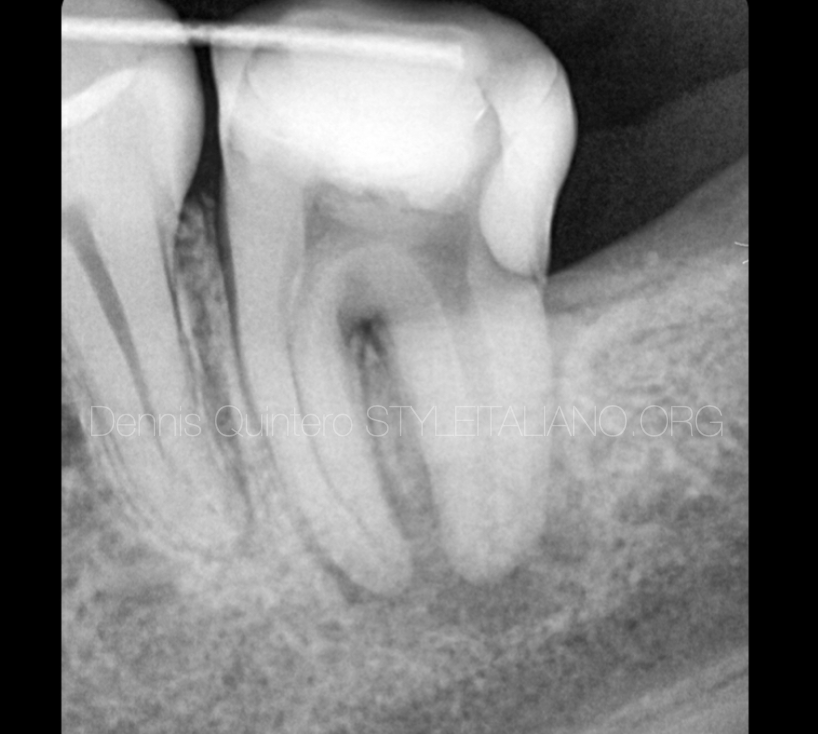
Fig. 10
X-ray to verify the tooth is placed correctly in the socket.
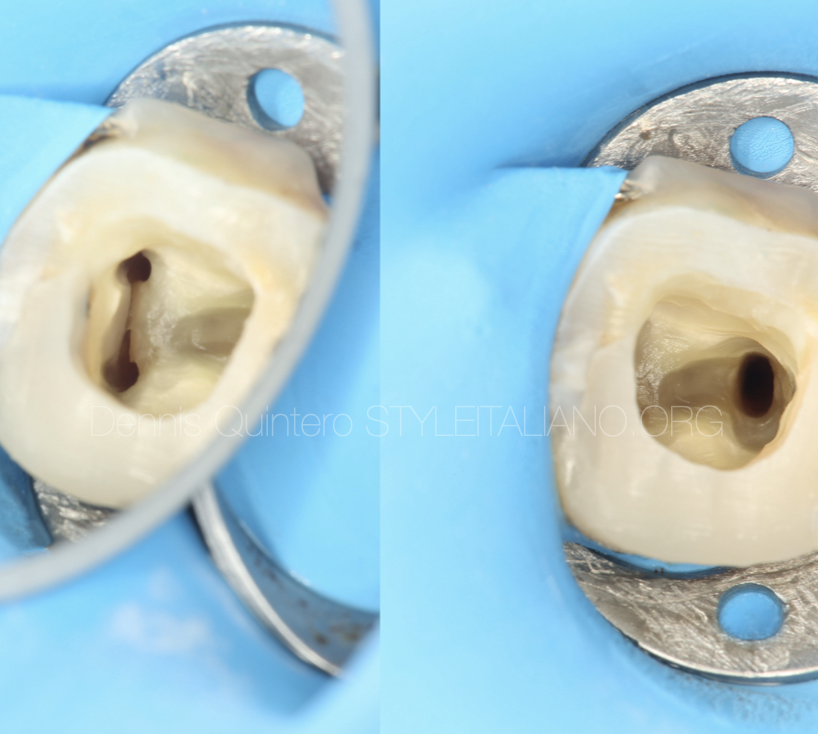
Fig. 11
After 15 days isolation is made for the endo treatment.
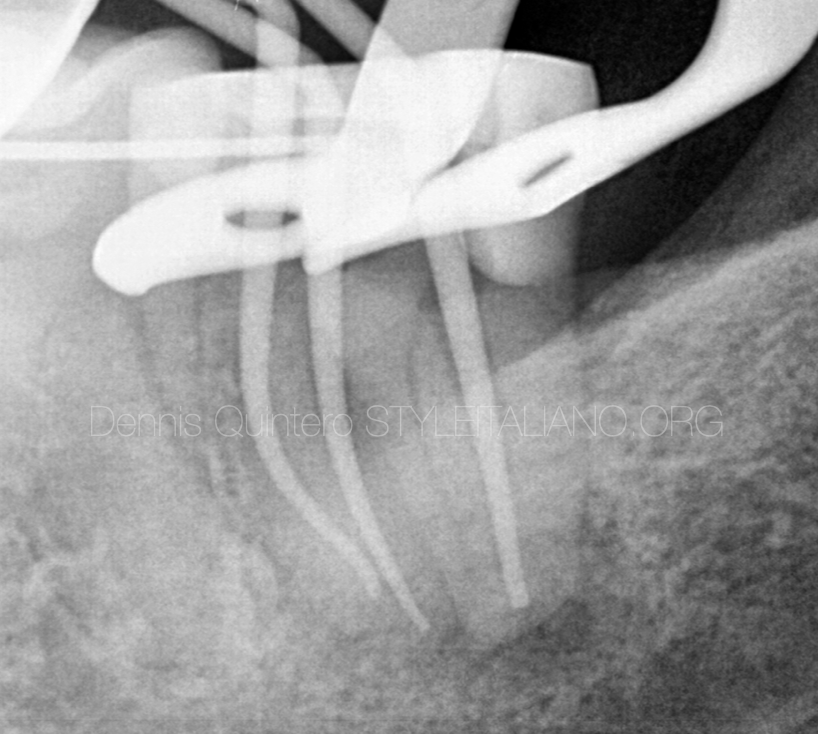
Fig. 12
Working length is achieved.
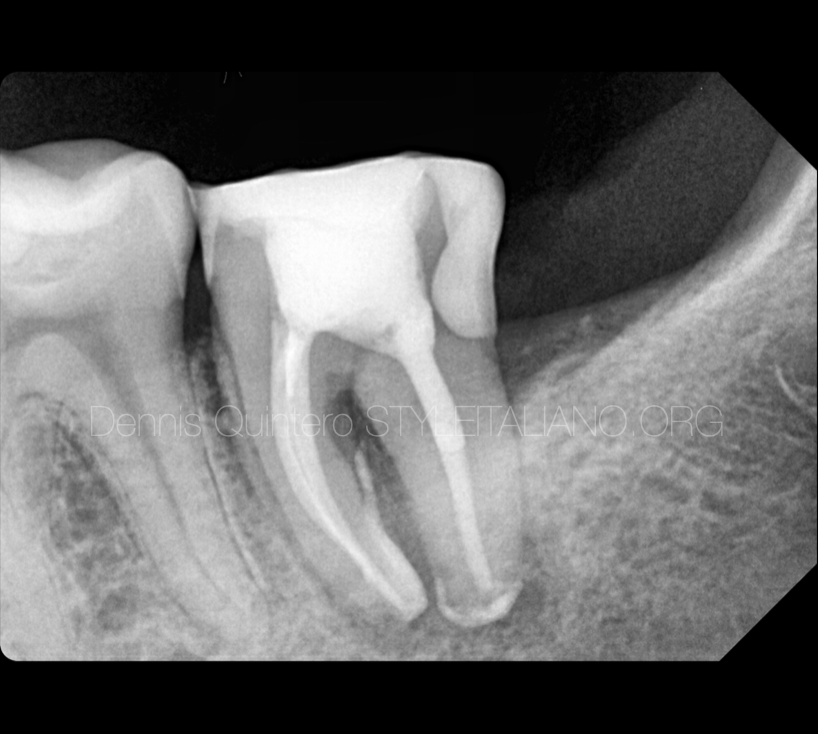
Fig. 13
Post - op X-ray. You can see intentional replantation was made to achieved a good distal restoration and endo treatment.

Fig. 14
After four months and partial adhesive preparation, a final Emax restoration is made for final result.
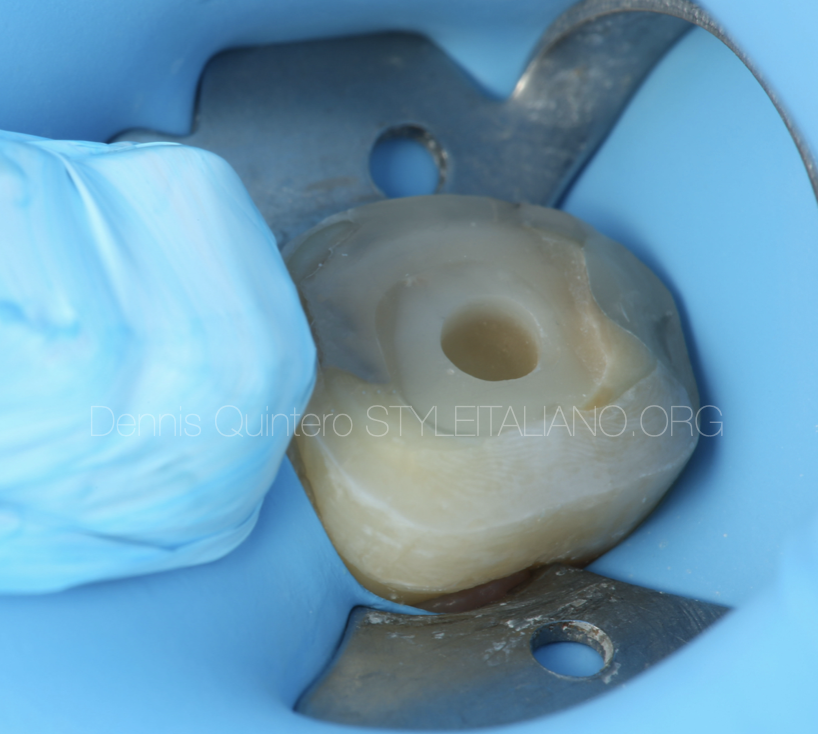
Fig. 15
For the cementation protocol isolation is mandatory.

Fig. 16
Final restoration is cemented with pre heated composite.
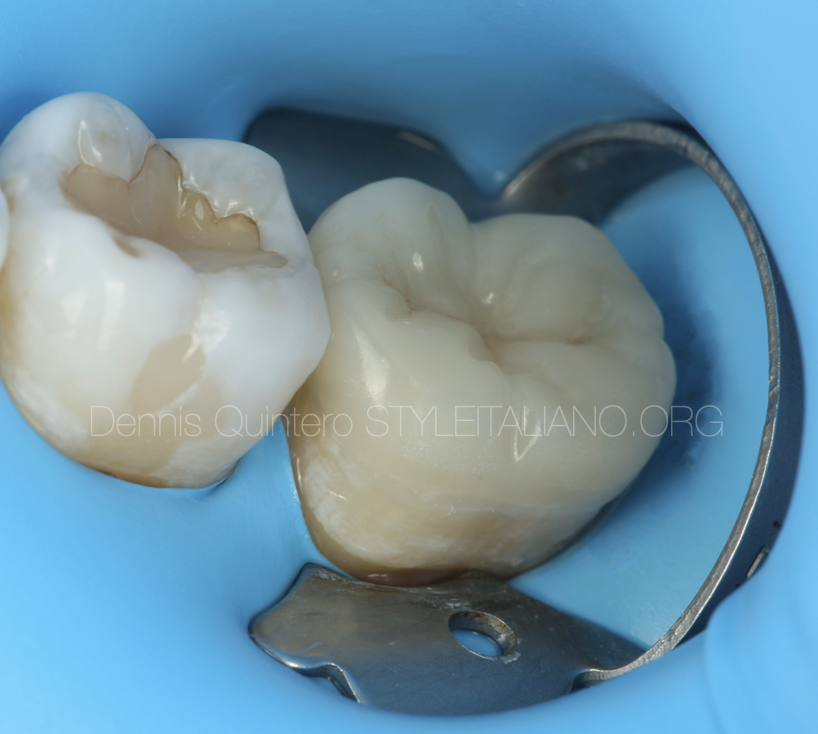
Fig. 17
Excess of cement is removed and polished
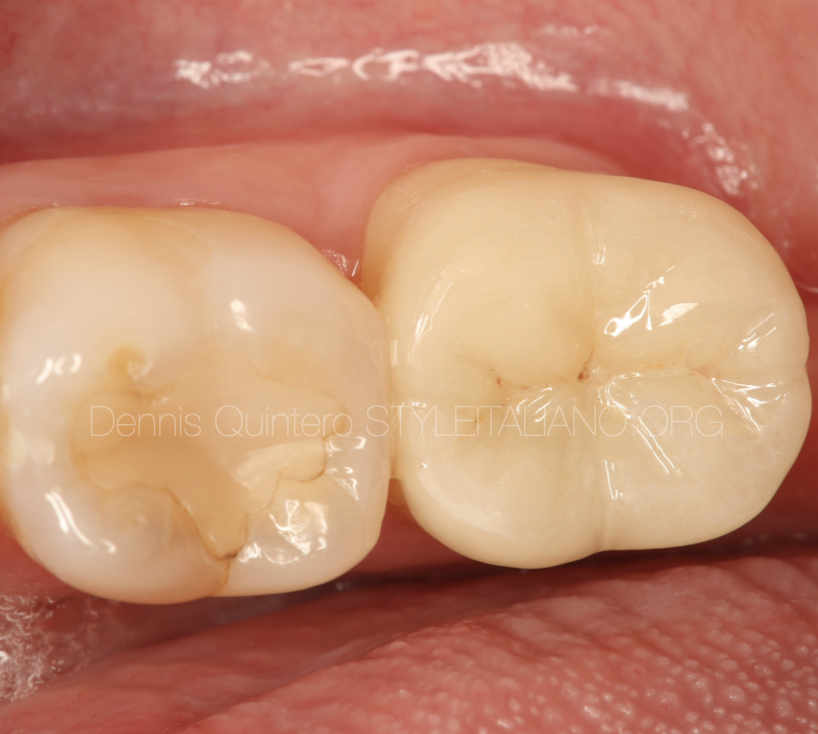
Fig. 18
Final result with the final restoration.
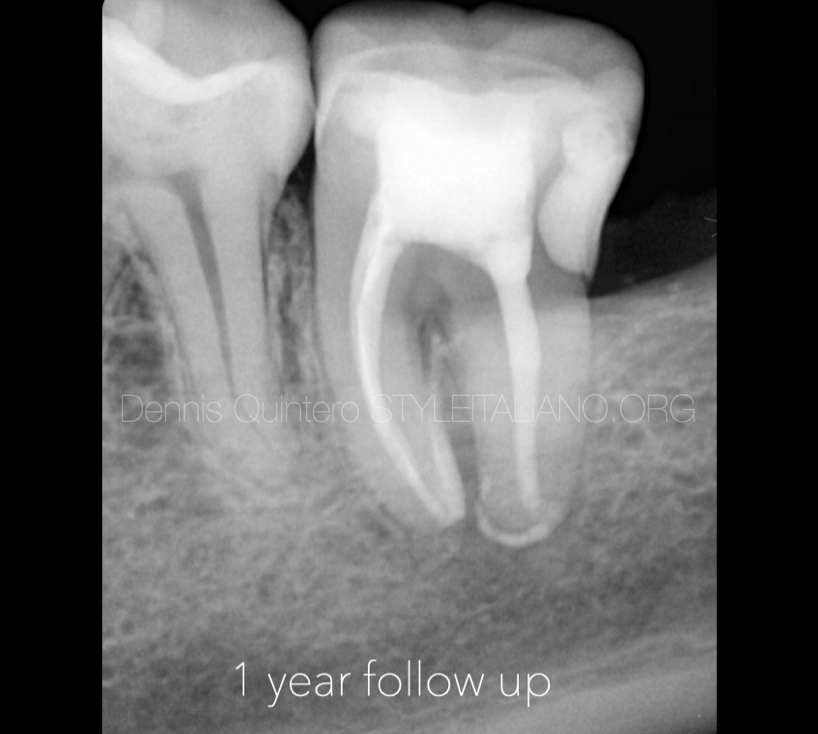
Fig. 19
One year follow up with a complete healing, no mobility, no symptoms
Conclusions
Nowadays we have in dentistry many different alternatives to save teeth and is very important to understand and have the capacity to use it in order to help are patients. Implants is a very good alternative but only when the tooth is fractured or not in the mouth anymore.
Bibliography
- Plotino G (ed) Minimally invasive approaches in endodontic practice. In: Minimally invasive alter- natives to dental extraction and implant placement. https://doi.org/10.1007/978-3-030-45866-9_9
- Becker BD (2018) Intentional replantation techniques: a critical review. J Endod 44:14–21
- Torabinejad M, Dinsbach NA, Turman M, Handysides R, Bahjri K, White SN (2015) Survival of intentionally replanted teeth and implant-supported single crowns: a systematic review. J Endod
41:992–998 - Mainkar A (2017) A systematic review of the survival of teeth intentionally replanted with a mod-
ern technique and cost-effectiveness compared with single tooth implants. J Endod 43:1963–1968 - Chércoles-Ruiz A, Sánchez-Torres A, Gay-Escoda C (2017) Endodontics, endodontic retreatment, and apical surgery versus tooth extraction and implant placement: a systematic review. J Endod
43:679–686 - Solakoglu Ö, Filippi A (2017) Transreplantation: an alternative for periodontally hopeless teeth.
Quintessence Int 48:287–293 - Chung WC, Tu YK, Lin YH, Lu HK (2014) Outcomes of autotransplanted teeth with complete root
formation: a systematic review and meta-analysis. J Clin Periodontol 41:412–423 - Plotino G, Abella Sans F, Duggal MS, Grande NM, Krastl G, Nagendrababu V, Gambarini G. Present status and future directions: Surgical extrusion, intentional replantation and tooth autotransplantation. Int Endod J. 2022 May;55 Suppl 3:827-842. doi: 10.1111/iej.13723. Epub 2022 Mar 30. PMID: 35279858.
- Plotino G, Abella Sans F, Duggal MS, Grande NM, Krastl G, Nagendrababu V, Gambarini G. Clinical procedures and outcome of surgical extrusion, intentional replantation and tooth autotransplantation - a narrative review. Int Endod J. 2020 Dec;53(12):1636-1652. doi: 10.1111/iej.13396. Epub 2020 Sep 30. PMID: 32869292.

